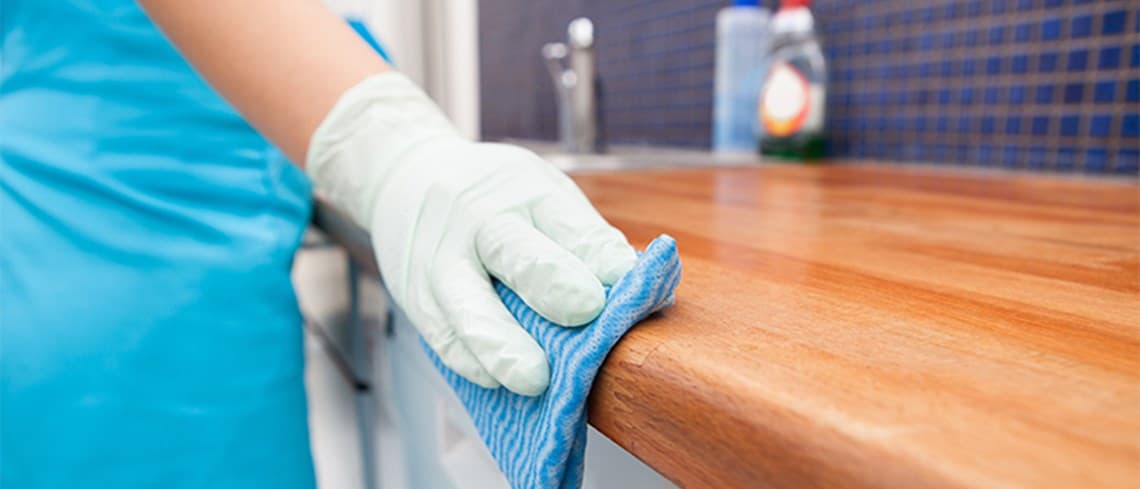Tips to a Healthy Home
Tips to a healthy home
Our homes are where we spend the majority of our time. Especially now, with the new work-from-home lifestyle, chances are we spend most of that time sitting on our desk chairs.
But are you aware of critical home hygiene hotspots and have a healthy home? Unfortunately, even the tidiest of homes can harbor unwelcomed bacteria, which could spread various diseases.
So what can you do to prevent the build-up of bacteria, stop spreading harmful germs at home and maintain a healthy home for your family?
You don’t need to tackle the entire house immediately or rapidly change your house cleaning frequency, but certain areas require a little more attention when it comes to healthy home hygiene.
So we’ve taken a look at the key trouble spots and put together some house cleaning tips, such as cleaning the grimiest place in the house, which will help to protect your family’s and home’s health.
Kitchen
The kitchen is often considered the heart of the home. But, according to research, the kitchen contains more germs than any other room in the house, and while you may think you know how to clean your kitchen, you might be missing out on many of the popular kitchen hygiene hotspots.
- Damp sponges and cloths can become a breeding ground for germs and bacteria if they are not properly cleaned and stored. Wash and sanitize your kitchen sponge or cloth after use, and replace them regularly.
- The kitchen sink might be dirtier than the toilet seat in your house. Washing or preparing raw food, cleaning dirty utensils, and rinsing contaminated cloths/sponges will leave their fair share of germs behind. Disinfect your sink, tap, and surrounding surfaces regularly with antiseptic liquid or Dettol’s kitchen power killer spray to eliminate 99.9% of germs.
- Kitchen counters, worktops, chopping boards, and other multipurpose surfaces used for food preparation can accumulate germs and bacteria through different sources. Therefore, you must clean and disinfect such areas using an antiseptic liquid or antibacterial multiuse wipes.
- The rubbish bin often becomes a hotbed for harmful germs that can spread across the house, so you must clean the kitchen bins and counters regularly and disinfect them for a healthy home.
- Practice good hand hygiene before you do anything in the kitchen by washing your hands with an anti-bacterial soap or liquid hand wash. But using hand hygiene products isn’t enough; you must also know these proper hand washing steps for a healthy you and home.
Bathroom
Although the bathroom doesn’t harbor as many germs as the kitchen, it’s often warm and damp conditions make it a perfect environment for germs.
However, just a few small changes to your house cleaning routine and basic bathroom hygiene hotspot awareness will help keep your bathroom safe for you and your family.
- Regularly wipe down sinks, toilet seats and flush, taps, baths, and shower walls with a disinfectant spray or anti-bacterial multiuse wipes to eliminate germs and bacteria.
- Toothbrushes can easily accumulate germs and bacteria floating around in the bathroom. Properly wash them with anti-bacterial soap before using them, and regularly replace your toothbrush, especially after any sickness.
- Always close the toilet lid before you flush to prevent the splashes of polluted droplets from escaping into the air. These droplets will, later on, settle on various surfaces and objects in the bathroom and could result in illness.
- Wash your hands thoroughly for at least 20 seconds with an anti-bacterial soap or liquid hand wash after using the bathroom. If soap and water are unavailable, apply hand sanitizer that eliminates 99.9% of germs.
Follow the steps mentioned in our how to clean your bathroom guide to ensure you keep it germ-free and ready it in record time for your guest.
Bedroom
Whether you share a bed with someone else or not, you are never alone in bed. Dirt, dust, mites, pet dander, and allergens always share the bed with you whenever you sleep.
Add hair, dead skin, fungi, and pollen, and you get an allergen-filled combination that can drastically increase the risk of an allergic reaction and various illnesses.
Here’s how you can reduce the allergens, dirt, dust, and dust mites from your bedroom:
- Use zippered plastic mattress and pillow covers.
- Once a week, wash all bedding in hot water above 50˚C.
- Vacuum uncovered mattresses regularly.
Use antiseptic liquid while washing your bed sheets.
Surfaces and objects
Frequently touched surfaces and objects in the home are hotbeds for germs because many people are constantly using them. These surfaces and objects include:
- Doorknobs
- TV remote controls
- Electronic appliances (microwave, refrigerator, etc.)
- Light switches
- Countertops
- Tables and chairs
Maintaining a clean and healthy home environment might seem a little overwhelming. Still, a few small additions to your house cleaning regimes, such as disinfecting such surfaces and objects using Dettol’s disinfectant spray, liquid, or wipes, can have a huge and ever-lasting impact for germs protection.
FAQs
Why a healthy home is important?
Maintaining a healthy home is essential to reduce the risk of contracting several serious illnesses such as meningitis, pneumonia, diarrhea, typhoid, food poisoning, and more.
Moreover, unhealthy homes can increase the risk of physical injury and lead to depression and other forms of mental illness.
Which part of the house should be the cleanest?
The kitchen and living room are the parts of the house that should be the cleanest.
What are the seven principles of a healthy home?
The seven principles of a healthy home include:
Keeping the home:
- Dry
- Clean
- Ventilated
- Pest-free
- Contaminant-free
- Safe
- Maintained
